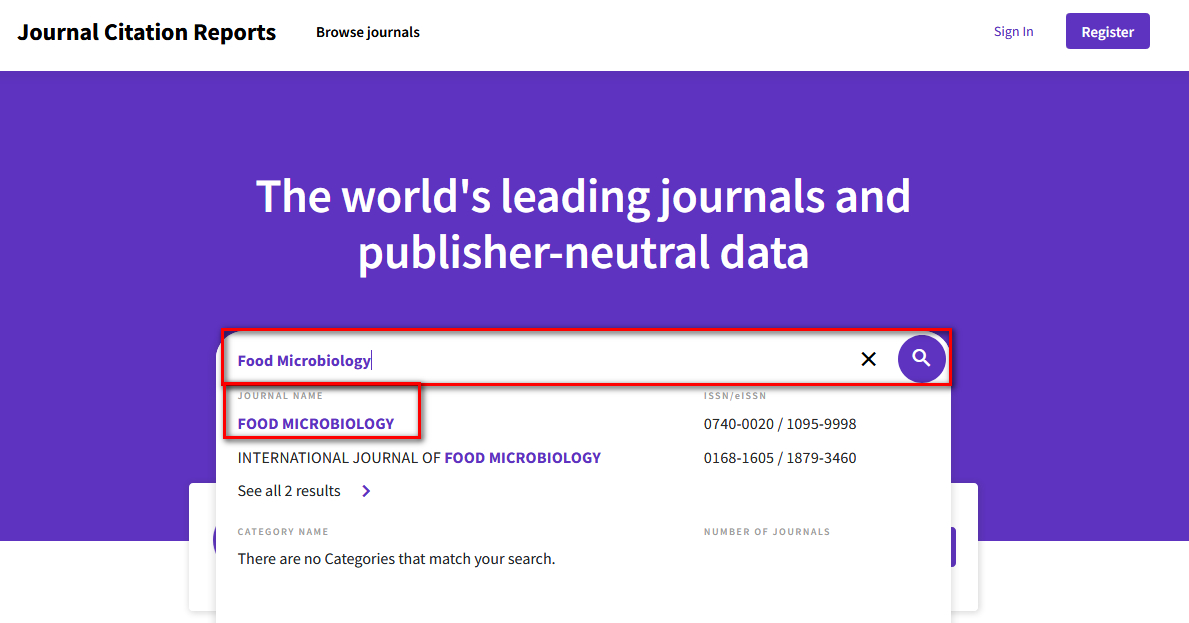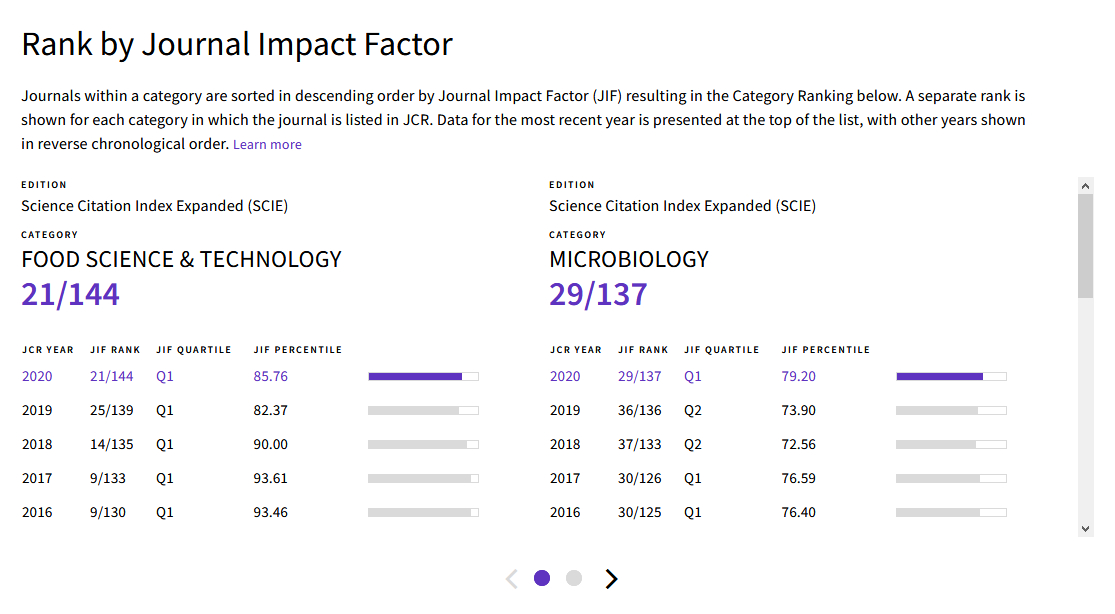
The Scholarly Communication team at NUS Libraries provides consultations to the NUS community on matters related to academic publishing, predatory publishing, Open Access and APCs, research impact metrics and how you can obtain your own metrics or profiles for Annual Reviews, P&T or peer benchmarking.
Do feel free to contact us if you have any questions:
Journal-level metrics measure the impact of journals based on the number of publications and citations the publications received in the journal. In general, journal-level metrics allow for the comparison of journals for purposes of:
Some straight-forward journal metrics like CiteScore or Journal Impact Factor measure the average number of citations each publication receives in a journal, while more complex metrics like Source Normalized Impact per Paper (SNIP) Or SCImago Journal Rank (SJR) perform some kind of field-normalization that allows for comparison of journal impact across disciplines and subject areas. All of these journal metrics are calculated differently based of different parameters; thus, researchers should be aware of how to best use these journal metrics correctly and accurately.
Journal Impact Factor (JIF) identifies the frequency with which an average article from a journal is cited in a particular year. This is calculated by deriving the ratio between the total number of citations garnered by documents and the total number of citable documents in a journal. The time period of calculation over a two year period. Only journals that are indexed in Web of Science's Science Citation Index Expanded (SCIE) and Social Sciences Citation Index (SSCI) will have a JIF value.

Adapted from Faeth, Kristen. LibGuides: Journal Citation Reports: Learn the Basics. https://clarivate.libguides.com/jcr/basics. Accessed 20 Jan. 2022.
It is incredibly important to make use of JIF correctly and accurately and it has often been misused and abused. This is mainly due to the differences in publishing and citation behaviours between disciplines. You should never directly compare the JIF of two journals with different subject disciplines. JIF by itself only provides the average number of citations articles will receive in a journal, but provides zero context about how well a journal is performing based on the score - as such, researchers should also make use of the JIF percentiles or quartile information to provide more context to a journal's performance based on JIF.
Similar to JIF, CiteScore is a journal metric that is used to measure the average number of citations received by all items published in a journal. It is calculated only for journals indexed in the Scopus database, and is calculated based on a four year time period. While JIF is measured based on citable documents, CiteScore takes into account all items that are published in the journal. Similar to JIF, CiteScore should also be used together with the corresponding CiteScore subject category quartile or percentile information to provide context as to what the value means.

Adapted from How Are CiteScore Metrics Used in Scopus? - Scopus: Access and Use Support Center. https://service.elsevier.com/app/answers/detail/a_id/14880/supporthub/scopus/. Accessed 20 Jan. 2022.
SCImago Journal & country Rank (SJR) is a journal metric that is based on the transfer of prestige from a journal to another based on the idea that not all citations received are equal. The prestige of citations received are dependent on the subject field, quality and reputation of the journal. It uses a 3 year citation window and is calculated based on Scopus' sources.
Source Normalized Impact per Paper (SNIP) measures the average citation impact of publications in a journal, correcting for differences in citation practices between scientific fields. It uses a 3 year citation window and is also calculated based on Scopus' sources.
You are able to directly compare the SJR or SNIP values between journals from different subject categories due to the normalization done when calculating these two metrics. This is unlike CiteScore or JIF where you should avoid comparing CiteScore or JIF of journals between different subject categories.
References:
https://www.scimagojr.com/SCImagoJournalRank.pdf
https://www.journalindicators.com/methodology
Journal Citation Reports (JCR) is a library subscribed database that provides you with access to JIF and JIF rank/quartile information for journals indexed in Web of Science's core collection.
----
NOTE: Due to changes in Clarivate Analytic's business model for JCR in 2021, they have since disabled and disallowed downloads and access to the full list of journal subject, JIF, rank and percentile information in JCR. Users will no longer be able to download the full list of impact factors for all journals in SCIE or SSCI. Instead, users will need to utilize the 'Browse journals' function (shown below) to retrieve metrics for 600 journals at a time. The library does not have access to these full SCIE or SSCI files.
----
It is relatively simple to use - you can either search via a journal name, browse by journals, or browse by categories. If you are interested in the JIF value for a journal, simply search for a journal's name and select the journal's name based on the auto-complete function of the search box.

“Screenshot” from Journal Citation Reports by Clarivate
This will bring you to the journal profile of the specific journal. This page provides you with information about the journal, the subject categories that the journal is indexed in, and the key indicators and rank information for the journal. Scroll down to the middle of the journal profile page to the 'Journal's performance' - 'Journal Impact Factor' section for a summary of the journal's impact.

“Screenshot” from Journal Citation Reports by Clarivate
To find the Journal Impact Factor rank information, scroll down to the 'Rank by Journal Impact Factor' section. This will provide the JIF rank, quartile and percentile information based on the JIF score for a particular year for each subject category.

“Screenshot” from Journal Citation Reports by Clarivate
Alternatively, instead of searching for individual journals, you could also browse journals based on their categories using the 'Browse by Journal function'.

“Screenshot” from Journal Citation Reports by Clarivate
You can use the different filters on the page you help you browse and find journals. On this page, you will be able to export out metrics by clicking on the 'Export' icon at the top right of the page, exporting metrics for up to 600 journals at a time.

“Screenshot” from Journal Citation Reports by Clarivate
As there is a limitation to the number of journals that you can export from JCR, using the filters, such as categories, JIF quartiles or JIF percentiles that will be useful.

“Screenshot” from Journal Citation Reports by Clarivate
As CiteScore, SNIP and SJR are calculated based on Scopus' sources, you will be able to find these three journal metrics directly via Scopus.
----
NOTE: With the release of 2021 metrics, Elsevier has modified the workflows for obtaining metrics from Scopus Sources. Refer to the last screenshot of this section for more information.
----
Go to Scopus Sources. You can then search for a particular journal via name, subject area, ISSN or publisher, or browse via the list of journals.

“Screenshot” from Scopus by Elsevier
This provides you with the journal information related to the journal in a tabular format. Click on the arrow to the right to reveal the SNIP and SJR values.

“Screenshot” from Scopus by Elsevier
Click on the journal name to go to the source details page for further information.

“Screenshot” from Scopus by Elsevier
Alternatively, instead of searching for individual journals, you could also browse journals based on subject areas, and then browsing journals via the different categories. This will allow you to see a list of the different journals ranked based on the journal metrics within their respective subject areas.

“Screenshot” from Scopus by Elsevier
You'll also be able to request for a copy of all the journal metrics found on Scopus Sources directly from Elsevier. As of June 2022, you will need to click on 'Download Scopus Source List' > 'Request an overview of CiteScore, SNIP and SJR journal metrics'. This will bring you to a Email support contact form. When submitting the form, under reasons 'Please, select an option..", choose the option for Content and briefly describe why you need the data and how you will use it. The Elsevier support team will get back to you on your request.

If you'd like to look at the SJR quartile information, you will need to go directly to the SJR portal to find out more instead of just relying on Scopus Sources.
Go to the SJR website and search for a particular journal via title, ISSN, or publisher name. Select the relevant journal record that you are interested in.

"Screenshot" from SJR
At the journal page, scroll down to find the SJR and quartile information for the journal.

"Screenshot" from SJR